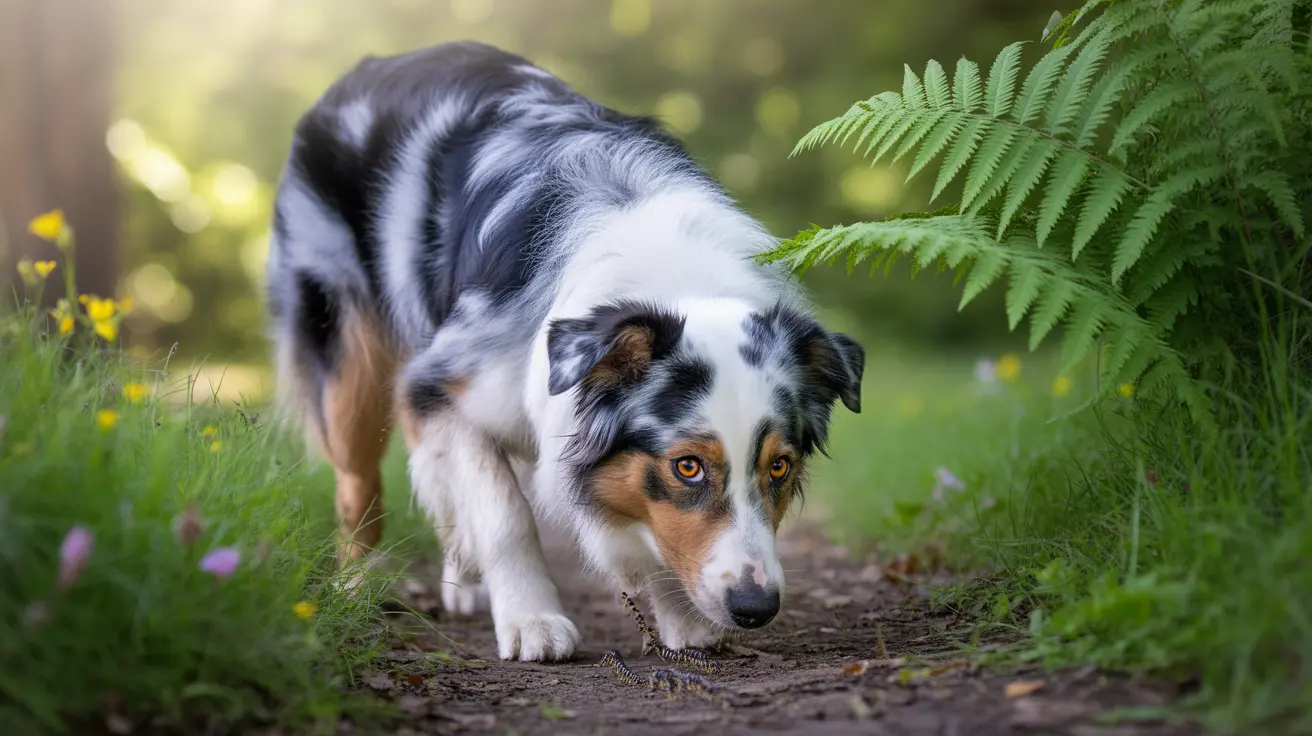Understanding the Basics of Dogs and Ants
Many dog owners have witnessed their curious pets sniffing around ant trails or even attempting to eat these tiny insects. While the sight might be concerning, there's generally no need to panic when your dog encounters common household or garden ants. These small insects are typically harmless when ingested in small quantities, and some even contain trace amounts of protein and vitamin C.
However, not all ant encounters are created equal, and it's crucial for pet parents to understand the potential risks and safety considerations involved when their dogs interact with different species of ants.
Common Ants vs. Dangerous Species
Most black ants or common household ants pose minimal risk to your dog. These insects might taste unpleasant due to their formic acid content, but they're generally safe if consumed in small amounts. In fact, some regions have historically incorporated ground-up ants into dog food as a protein supplement, though this practice isn't common in commercial pet food today.
The real danger comes from fire ants and red ants, which can deliver painful stings and bites. These aggressive species inject venom that can cause severe reactions in dogs, ranging from localized swelling to potentially life-threatening allergic responses.
Health Risks and Warning Signs
While most ant encounters are harmless, there are several situations where eating ants could pose health risks to your dog:
- Allergic reactions (rare but serious)
- Stomach upset from consuming large quantities
- Exposure to ants carrying pesticides or toxins
- Risk of bacterial contamination
- Direct injury from fire ant stings
Watch for these warning signs after your dog encounters ants:
- Swelling around the face or mouth
- Excessive scratching or licking
- Difficulty breathing
- Vomiting or diarrhea
- Unusual lethargy or distress
Prevention and Management
The best approach to protecting your dog from ant-related issues is prevention. Store dog food in airtight containers and clean up spills promptly to avoid attracting ants. Regular inspection of your yard for fire ant mounds can help prevent dangerous encounters during outdoor activities.
If you find ants in your dog's food bowl, remove the contaminated food immediately and thoroughly clean the area. Consider using natural ant deterrents like diatomaceous earth around feeding areas to keep ants at bay.
When to Seek Veterinary Care
While most ant encounters don't require medical attention, certain situations warrant an immediate call to your veterinarian:
- Multiple fire ant stings
- Signs of allergic reaction
- Respiratory distress
- Severe swelling or pain
- Persistent vomiting or diarrhea
Frequently Asked Questions
Is it safe for my dog to eat ants found in the house or garden?
Yes, most common household and garden ants are generally safe if your dog eats a few. However, monitor your pet for any unusual reactions, especially if you're unsure of the ant species involved.
What are the dangers of dogs eating fire ants or red ants?
Fire ants and red ants can deliver painful stings and inject venom, potentially causing severe allergic reactions, swelling, pain, and in rare cases, anaphylaxis. Keep your dog away from fire ant mounds and seek immediate veterinary care if stung.
How can I tell if my dog is having an allergic reaction after eating ants?
Watch for signs like facial swelling, hives, excessive scratching, difficulty breathing, vomiting, or unusual lethargy. If you notice any of these symptoms, contact your veterinarian immediately.
What should I do if I find ants in my dog's food or feeding area?
Remove and dispose of any contaminated food immediately. Clean the area thoroughly with pet-safe cleaning products and store future food in airtight containers. Consider using natural ant deterrents around feeding areas.
Can ant poison or ant traps harm my dog if they eat ants or the bait?
Yes, ant poison and bait stations can be dangerous if ingested by dogs. Keep all pest control products out of your pet's reach and use pet-safe alternatives when possible. If you suspect your dog has consumed ant poison, contact your veterinarian or pet poison control immediately.
Conclusion
While dogs eating common ants is generally not cause for alarm, it's important to stay vigilant about dangerous species and potential reactions. By understanding the risks, implementing prevention strategies, and knowing when to seek veterinary care, you can keep your curious canine safe from ant-related issues.






